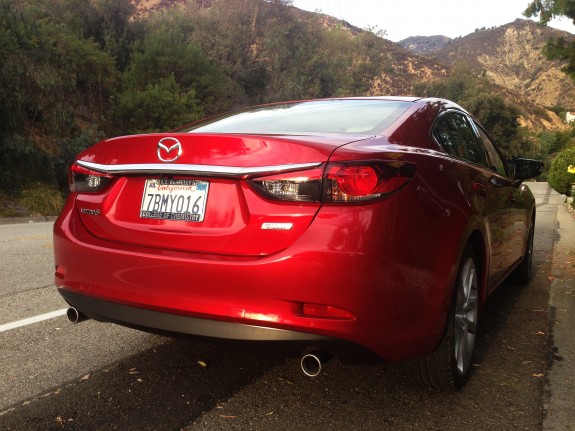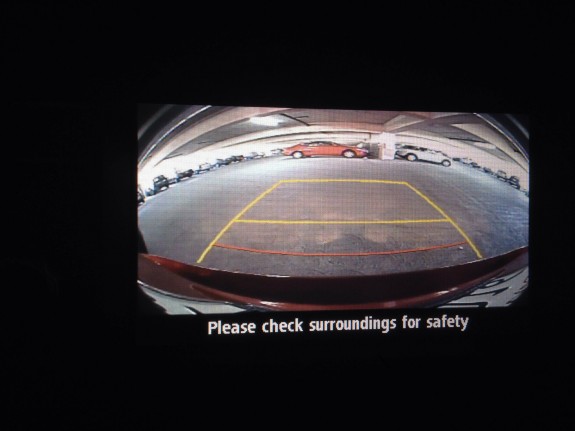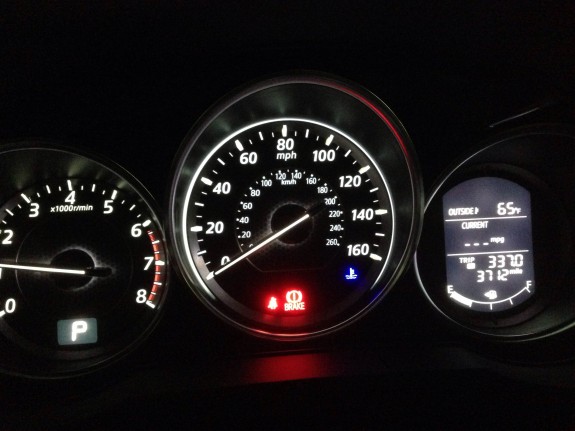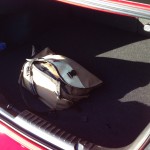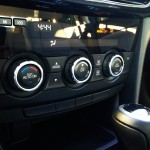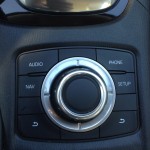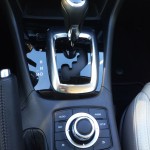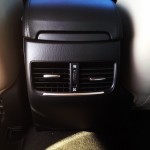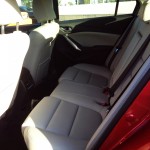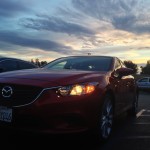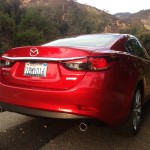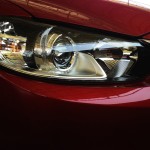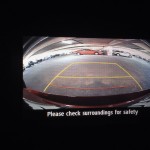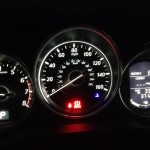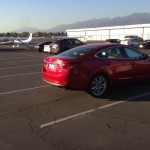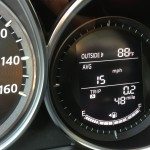Long-Term Intro: 2014 Mazda 6 Touring
After months of drooling over a Dodge Charger R/T, I came home with a Soul Red 2014 Mazda6. Waaaah? The Charger is a gas guzzling, rolling tank of Americana, while the Mazda6 is the slightly quirky choice for family sedan buyers. Other than the color, the two have nothing in common. As much as I loved the Charger on paper, and as much as driving the Super Bee made me smile, I had to choose a car that made sense as my single daily driver. Follow the jump to hear how I decided and my first impressions on the car.
My wife was open to me buying a Charger. But watching her sink into those giant bucket seats and struggling to view out of the claustrophobic cabin with the high cowl and high belt line dampened my enthusiasm for the Charger. While the front was very roomy, the back felt less room in every direction except width compared with the 6. The stylish looking giant leather seats in the Charger could stand to lose a few inches to give more knee room to backseat passengers. Driving down a narrow street, my wife was crawling past parked cars because she wasn’t used to the width of the vehicle. Even though the measurements on paper aren’t that wide, she still felt uncomfortable in the car. As soon as we got in the Mazda, everything was instantly better. The seating position, the visibility, the interior materials, and the build quality.
Drive
While the manual felt nice, neither of us thought it was worthwhile as a no-cost option for a family sedan. Ride and noise weren’t as good as the charger, but the steering and handling felt much lighter and more nimble. The transmission shifts smoothly and is quick to drop a gear or 3 for passing. Ben and I were both surprised by the amount torque available in the low end. Around town driving doesn’t require a lot of revs and keeps the cabin quiet and relaxed. Cruising at 70MPH on the freeway requires 2,000 RPMs in 6th. There is a manual mode to allow you to lock the gear. Since I’m still in the break in period, I haven’t tried to see whether it holds the gear near redline. I don’t imagine it would since most competitors do not. Pushing up on the shifter downshifts and pulling the shifter towards you shifts up. The exhaust note is the typical four banger family sedan. Uneven spans of pavement can be felt through the seat, but the sound is well damped. We have yet to take it on a long road trip to get a feel for how fatiguing the ride is over time. The suspension gives the driver a lot of confidence, with less body roll in the turns and less nose dive under heavy braking than other sedans from recent memory.
While the Touring doesn’t have parking sensors, it does have rear cross traffic collision detection. We experienced this first hand when backing out of the lot during the test drive onto a busy street. The backup camera will flash a warning message on the screen and also audibly beep to alert you that someone or something is behind you. I notice that it’s more sensitive to objects to either side of the car rather than objects directly behind the car. Speaking of the backup camera, the resolution is on the fuzzy side, but it’s quick to turn on and shows just enough of the rear bumper to help the driver know where the back of the car is. This is my first car with a rear backup camera, and I’m thankful for it because the Mazda’s high rear deck and coupe roofline make it difficult to judge where the rear corners of the vehicle are.
If the backup beeps are not enough, try switching lanes in busy Los Angeles traffic with blind spot monitoring (BLIS) enabled. At all times, there is a small amber light in the upper corner of both rear view mirrors indicating whether another vehicle is in your blind spot. If a car is in your blind spot when your turn indicator is on, then the car also beeps at you. I’ve grown used to the beeps after a few weeks, but the whole system can be disabled via a button left of the steering wheel by the driver’s knees.
Interior
Here’s where the Mazda really shined and sealed the deal for us. The tan leatherette seats does not feel as upscale as leather, even if it looks the part with detailed white stitching. The bottoms are on the firm side. Bolsters are not so aggressive as to make getting in and out difficult, while still giving off a sporty look. Several other automotive magazines have criticized the small screen on the 6, but in person, it’s a very functional and easy to use unit. Most of the time, I find myself reaching for the iDrive-like control knob living between the two front seats. These fall right by the driver’s hand, and doesn’t require reaching up to the screen. With a few minutes practice, it’s easy to remember where each button is and access most of the functionality without glancing at the screen. Redundant steering wheel audio controls complete the package. We’ll go more in depth about the infotainment integration in a separate post.
Push button start is included, but isn’t as useful as on the Grand Touring, which comes with keyless entry. Since I have my keys in my hands to unlock the door anyways, push button start is more cosmetic than functional. It seems the two go together like peanut butter and jelly.
Interior storage is plentiful. The front cup holders has a matching color cover to prevent junk from falling in, and the center armrest opens to a felt lined cubby hiding a USB port, an AUX jack, and a 12V cigarette lighter power socket. With bluetooth audio, I like to leave my phone in the cubby to charge without any messy wires running around. However, if you wanted to run a powered GPS unit, there’s a thoughtful notch cut in the cubby so you can run a cable out without pinching it. An even better design would be to have the notch run the width of the cubby instead of at just one point. Back seat occupants are treated to a fold out armrest with two cup holders, along with two angled cup holders in the back perfectly sized for a bottle of wine. There are air vents for the rear passengers, but they cannot be separately controlled from the front. Front seat passengers have dual zone climate and auto climate control, a real boon for hot southern California summers. The sand interior keeps the seats from burning passengers when they first get in. At least 2 people have complained on separate occasions that the leatherette breathes poorly and causes sticky clothes on hot days.
Exterior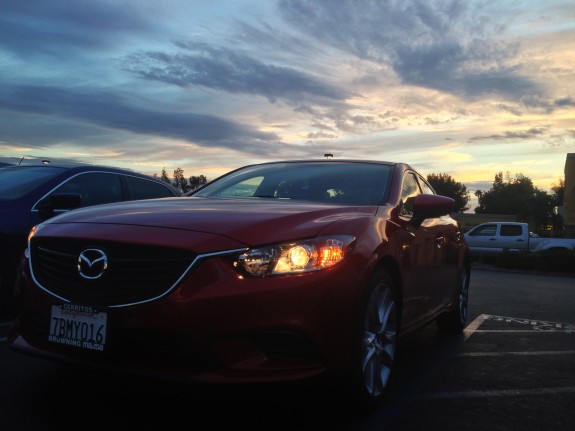
No more creepy smile. I like it.
The smoked rear taillights are a welcome trend away from Altezza style clear lamps. Parking lights are always on. While this trim does not include HID headlights, illumination is good. The trunk is cavernous and includes two shallow plastic cubbies behind the wheel wells to hold things in place. A spare tire lives under the carpet, but is not full sized. The 19″ alloy wheels are attractive and easy to clean. They are the same wheels as the Grand Touring model, but are painted with a lighter color. The large wheels are partly to blame for the firm ride. All trim levels sport a dual chrome tipped exhaust. Visually, there’s a strip of black plastic below the bumper to hide how large the rear end is. Hey, if you want a large trunk, you’re going to have some big rear overhangs. Mazda’s new design language reduces the amount of shiny chrome in the front and rear fascias. There’s still enough brightwork to lend a feeling of sophistication, but without blinding passerby pedestrians.
Value
After sitting at the dealer for a few hours, we agreed on a final price just under $23,700 (before taxes and fees). It’s not the cheapest family sedan on the market, but it represents a good value and a unique entry to an otherwise boring class. I liked the simplicity of the trim levels and the high level of content within each trim.
- The camera is very functional, but low in resolution and lines do not follow the steering angle
- Gauges are simple and legible with the 3rd cluster configurable with a steering wheel button.


